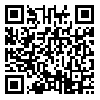Background and Objective: Self-directed learning is a purposeful process that is usually involved in identifying specific information for lifelong learning through a set of metacognitive and behavioral characteristics, and the learner consciously accepts responsibility for decisions related to activities. Therefore, the present study was conducted with the aim of identifying the structural relationship between self-directed learning skills and innovative academic behavior of medical students with the mediating role of problem-solving ability.
Method: The present study is a descriptive correlational study. The statistical population was 4149 students of Hamadan University of Medical Sciences, who completed the questionnaire voluntarily and online by defining the desired tool on the Pressline website. A sample of 350 people completed the questionnaire voluntarily and online. In addition, the standard questionnaire of self-directed learning in learning by Fisher et al. (2001), innovative behavior by Holman et al. (2012), and the problem-solving questionnaire by Heppner and Petersen (1982) were used to collect data. Finally, the data were analyzed using Pearson's test and structural equation modeling analysis in SPSS26 and AMOS23 software.
Findings: It was shown that self-directed learning skills had a direct significant correlation with the variables of innovative learning behavior (r=0.314) and problem-solving ability (r=0.434), and innovative learning behavior also had a positive relationship with problem-solving ability (r=0.411). Also, the fit indices included chi-square (x2=243.848), relative chi-square (x2/df=2.771), goodness of fit (GFI=0.89), normalized fit (NFI=0.912), comparative fit index (CFI=0.909), and root mean square error of approximation (RMSEA=0.055), and these results indicate a favorable fit of the output model.
| Rights and permissions | |
 |
This work is licensed under a Creative Commons Attribution-NonCommercial 4.0 International License. |


